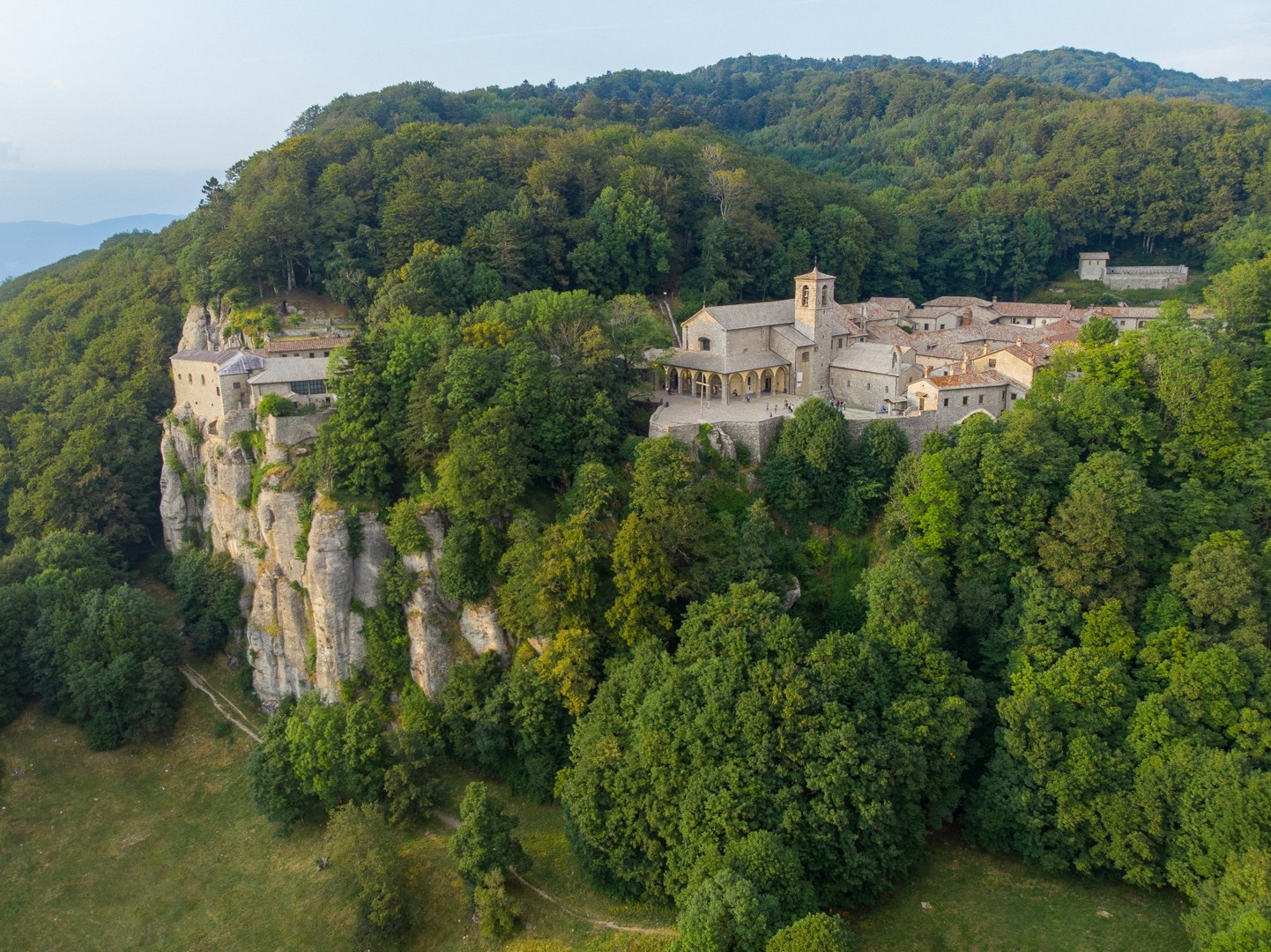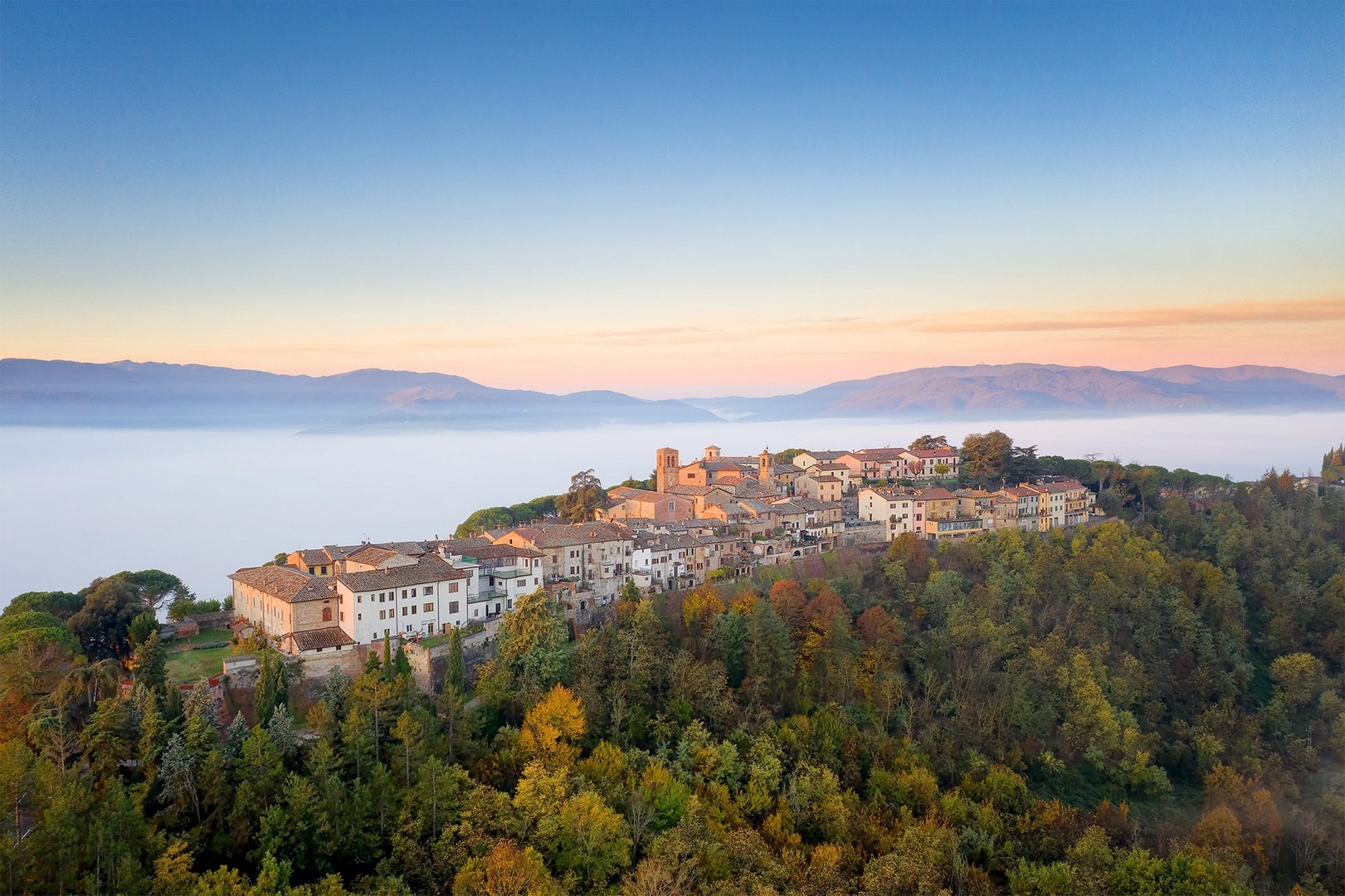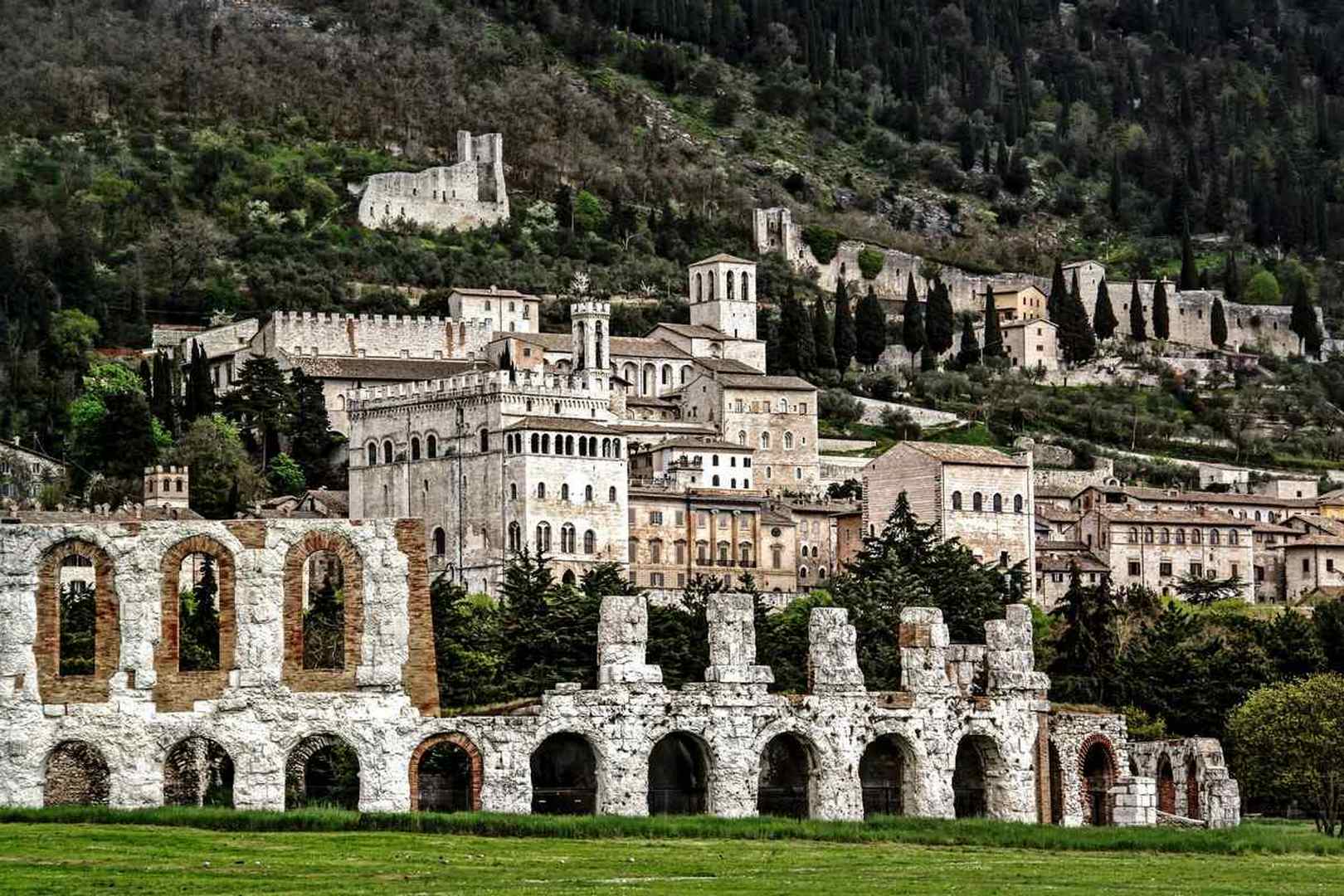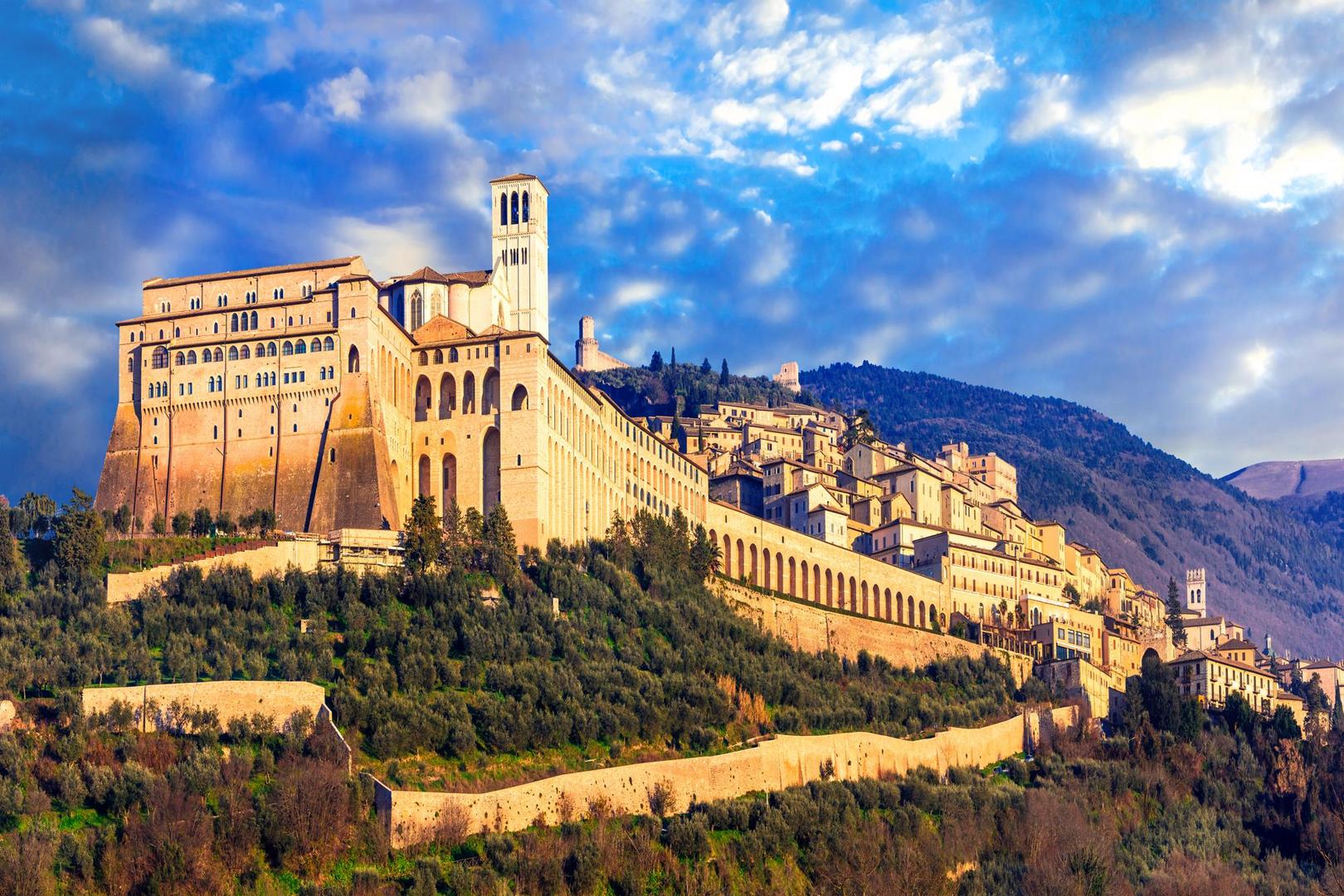There is a side of Italy that can be explored slowly on foot or by bike, in search of silence, contemplation and, perhaps, even oneself. This is the Italy of walking trails, such as the Via Francigena or the Via di Francesco, a pilgrimage route that touches on some of the most significant places in the life of Italy’s most famous saint, passing through unspoilt villages, shady woods, thousand-year-old churches and hermitages with a mystical charm. There are many possibilities, but we will concentrate here on the northern route to Assisi, the heart of San Francesco’s path. Let’s discover some of the most significant stops and where to stay.
San Francesco’s path, or simply Via di Francesco, was created to retrace the places that marked the life of the saint. Today, it is one of the most important spiritual and naturalistic routes in Europe, consisting of two main itineraries that lead to the central destination of the pilgrimage: Assisi, the birthplace and universal symbol of Saint Francis.
The northern route, approximately 189 km long, starts from the Sanctuary of La Verna in Tuscany, where the saint received the stigmata. The southern route, approximately 247 km long, starts in Rome, the heart of Christianity, and goes up through Umbria via the Holy Valley of Rieti, passing through Greccio, Rieti, Spoleto and Trevi, until it reaches Assisi. Another option is the Via di Roma, which starts in La Verna and leads first to Assisi and then on to Rome, covering a total of 500 km.
Over time, however, other complementary routes have been added to the main structure, such as Saint Francis’ path from Rimini to La Verna, and regional variations that pass-through villages, hermitages and abbeys in Tuscany, Umbria and Lazio, offering endless possibilities for those who wish to enjoy a personalized experience.
This route is open to everyone, believers and non-believers alike: anyone who feels the desire to immerse themselves in nature, slow down and rediscover their balance can try this route, taking into account their own needs, physical fitness and the varying degrees of difficulty of the different sections. It is perfect for pilgrims, hikers and trekking enthusiasts, or simply for people looking for an experience that combines spirituality, nature and the discovery of historical sites.
It can be tackled over several days, dividing it into stages, or you can choose one or two sections to walk as a personal or group experience, depending on your ability and level of fitness. All the routes are well marked with the key symbol of the path and the colours blue and yellow, but it is advisable to consult the official and updated websites before departure, both to obtain GPS tracks and to check for any temporary changes to the route.
Among the possible variants, the Northern Route, which starts from the Sanctuary of La Verna (in Tuscany) and reaches Assisi, is one of the most evocative routes, both for the richness of the landscapes and for the spiritual density of the places it passes through. The route is officially divided into eight stages, all of which can be covered on foot or by bicycle, with some sections more suitable for one mode of transport than the other. Here is an overview of the main stages!
The starting point is one of the most symbolic: the Sanctuary of La Verna, nestled within the beautiful Casentino Forest Park, is the place where Saint Francis received the stigmata. The first stretch is short but picturesque, descending towards the small village of Pieve Santo Stefano, the gateway to the Tiber Valley.

The second stage is challenging due to its length and continuous ups and downs: we recommend splitting it up, shortening the walk and stopping at one of the intermediate stages. However, the effort is rewarded by the beauty of the places you will pass through: first of all, we suggest a detour and a stop at the Hermitage of Cerbaiolo; the route then crosses the Alpe della Luna natural reserve through woods and scenic trails and continues until it reaches Sansepolcro, a city of art and the birthplace of the famous Piero della Francesca.
A shorter stage without too many difficulties marks the entrance to Umbria. You walk through cultivated fields, small villages and dirt roads until you reach Citerna, one of the “most beautiful towns in Italy”, overlooking the valley below. The landscape begins to take on the typical features of northern Umbria: gentle, hilly and intimate.

This stage crosses the plain of the Upper Tiber Valley, with an easy route offering numerous views of the Umbrian countryside among horse chestnut trees, oaks and downy oaks. The final downhill stretch welcomes pilgrims to Città di Castello, an important cultural and artistic centre, which also offers an excellent opportunity for a refreshing break.
One of the longest and most challenging stages, but also one of the most evocative: here too, we recommend taking the time to stop, rest and recharge your batteries. The trail enters the woods of the hinterland, passing through sparsely populated areas completely immersed in nature until it reaches one of the “heartlands” of the Via: Pieve de’ Saddi, the centre of the first Christianisation of the Upper Tiber Valley and for centuries the religious centre of the entire mountain area. The route continues with ascents and descents until it reaches Pietralunga, a cosy and authentic village that welcomes pilgrims with its tranquillity after many hours of walking.
The route to Gubbio – of medium difficulty – is steeped in spirituality and beauty, with the first section once again crossing mountain valleys, while the second is entirely flat until it reaches its destination. The city, linked to the famous legend of the encounter between Francis and the wolf, has one of the best-preserved historic centres in Umbria: we therefore recommend taking the time to visit this gem and, in the meantime, recharge your batteries for the next challenging stage.

Another stage with kilometres to cover and continuous ups and downs, but once again, the effort is rewarded by the beauty of the places you will pass through, such as solitary valleys, rural churches and high-altitude trails, with the possibility of stopping near Biscina Castle, which offers a sweeping view of the Umbrian landscape. Valfabbrica, a medieval village, is the last stop before reaching Assisi, which is now very close.
Apart from a stretch in the woods with some challenging climbs, this route is fairly easy. The trail winds through hills and olive groves until the Church of Saint Francis appears on the horizon. The arrival in Assisi, with its silence and stones steeped in history, represents the spiritual and symbolic destination of the entire journey.
The best time to tackle Saint Francis’ path is between late spring (May-June) and early autumn (September-October). During these seasons, the climate in Umbria and Tuscany is mild, the days are long and nature bursts into vivid colours. July and August are also possible but require a number of precautions because the lower altitude sections and paved roads can be very hot. We therefore recommend setting off early in the morning, avoiding the hottest hours of the day, and planning your hydration carefully (the official Via di Francesco website also lists all the water sources where you can stock up). Autumn offers a unique spectacle: foliage, new oil, and grape harvests. November can be charming, but increased rainfall can make the paths slippery, and the shorter days should not be underestimated.
Those who walk San Francesco’s path need welcoming places to rest and recharge their batteries: there is no shortage of farmhouses and hostels along the route. Among these, the Tenuta di Montecorona, a few kilometres from Umbertide, is one of the recommended stops, a place where the spirituality of the journey meets the elegance of rural hospitality.
Its unique feature is the opportunity to stay in the charming Badia and explore the ancient Camaldolese Hermitage that dominates the entire valley, which can be easily reached on foot or by bicycle along a path called “La Mattonata” dating back to 1503, which crosses an enchanting forest of chestnut and oak trees. You will be welcomed by unspoilt nature and a place of great historical and religious interest, with the opportunity to recharge your batteries while enjoying numerous experiences, such as savouring the delicacies of the Abbazia di Montecorona restaurant and the “Umbria Colli del Trasimeno” DOP extra virgin olive oil.

{description}